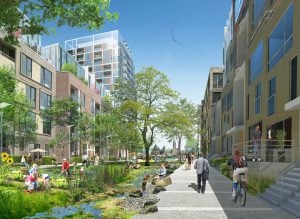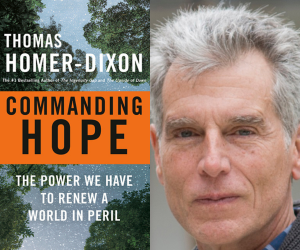
People & Culture
Kahkiihtwaam ee-pee-kiiweehtataahk: Bringing it back home again
The story of how a critically endangered Indigenous language can be saved
- 6310 words
- 26 minutes
This article is over 5 years old and may contain outdated information.
People & Culture

If Canadians have their way, by the time the bicentennial rolls around in 2067, the National Capital Region could feature more bike and pedestrian paths, an aquarium and even an amusement park with a ride representing every province.
These are just some of the ideas the public submitted to the National Capital Commission (NCC) — the branch of government whose job it is to ensure that the Capital Region is a “source of national pride and significance” — as part of its Horizon 2067 initiative, a long-term plan to bring to life what Canadians want the capital to look like in 55 years.
During the consultation period, the NCC received responses from 22,000 citizens, via nationwide public forums, online feedback and a partnership with The Royal Canadian Geographical Society. The recurring trends were that Canadians want more vibrancy and representation (i.e., the amusement park) and more sustainability (i.e., bike paths) in and around their capital.
“We already have the physical aspect of a great capital,” says François Lapointe, the NCC’s vice-president of capital planning. “What we need to do now is build on the legacy of past planning. We have a great stage, but what are we doing on that stage?”
Specific suggestions from the public included an Image Mill, such as the one that projects images and films onto the grain silos of Québec Harbour, as well as a zoo and botanical gardens. Other respondents said they want to see more culture in the capital in the form of art on government buildings and an increase in the number of festivals celebrating the nation’s diversity.
It’s hard to say whether the capital will get its Canadian-themed amusement park, a zoo or an aquarium, but those are probably not the type of projects the NCC would tackle. “A lot of suggestions from the National Engagement Strategy can go to partners or the private sector,” says Lapointe. “Lots of ideas are better suited for other sectors, but what we can do is bring those ideas to them. And we already have. We presented the ideas we received to the city a while back, saying, ‘This is what people want. This is what people are interested in seeing.’”
Lapointe hopes to see the Horizon 2067 plan presented to the public for feedback by October. Meanwhile, he wants to keep Canadians involved in the process of helping shape the National Capital Region. “People in consultation — those who responded to the National Engagement Strategy — need to be at the centre of the plan.”
Are you passionate about Canadian geography?
You can support Canadian Geographic in 3 ways:

People & Culture
The story of how a critically endangered Indigenous language can be saved

People & Culture
In the April issue of Canadian Geographic I wrote about Stratford, Ont.'s three decade struggle to repurpose the giant, neglected railway…

Places
In Banff National Park, Alberta, as in protected areas across the country, managers find it difficult to balance the desire of people to experience wilderness with an imperative to conserve it

Environment
In an exclusive excperpt from his new book Commanding Hope, Thomas Homer-Dixon highlights four key stresses that inhibit society's collective sense of a promising future for our planet